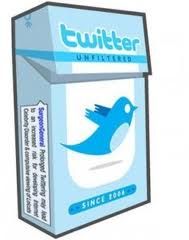Alcoholism
Framing Desire
Are Twitter and Facebook more ‘addictive’ than nicotine and alcohol?
Posted June 10, 2013

Last year I was asked by the British media to comment on the story suggesting that using Twitter and Facebook were more addictive than activities like smoking cigarettes and drinking alcohol. Once again this was a classic example of the media going beyond the data and not letting the facts get in the way of a good story. The research was carried out by psychologists Dr Wilhelm Hofmann (University of Chicago), Dr Kathleen Vohs (University of Minnesota), and Roy Baumeister (Florida State University) and published in the journal Psychological Science.
The first thing to note was that the research was not about addiction but about desire and temptation. The researchers point out that little is known about what types of urges are felt strongly (or only weakly), which urges conflict with other important things that we should be doing, and the extent to which urges can be resisted. The primary aim of the research team was to compare the various desires and the extent to which they are resisted in people’s day-to-day lives. The researchers used an innovative methodology to assess the frequency, intensity, conflict, resistance, and enactment of peoples’ desires.
The data were collected from 205 people aged 18 to 55 years and all living in (and around) Würzburg (in Germany). Two-thirds of the participants were female (66%) female and three-quarters of the total sample were university students (73%). All of the people taking part in the study were provided with a handheld Blackberry device and carried it around with them for a one-week period. Each day, they were sent seven messages over a 14-hour period asking them for specific data relating to desires and urges. All those taking part were given a small financial incentive at the start the study and were given additional financial incentives if they completed data entry for more than 80% of the messages sent by the research team. On average, over 90% of messages sent by the research team resulted in data being sent back (so there was an excellent response rate).

After each message was sent, those taking part in the study had to indicate whether were currently experiencing a desire (explained as a craving, urge, or longing to do certain things) or whether (in the previous half an hour) they had just experienced a desire. If they had a desire, they then had to indicate what kind of desire from a list of 15 domains (i.e., food, non-alcoholic drinks, alcohol, coffee, tobacco, other substances, sexual, media, spending, work, social, leisure, sleep, hygiene-related, or other). Additionally, they had to indicate: (i) the strength of the desire on a scale from ‘0’ (no desire at all) to ‘ (irresistible), (ii) the degree to which the desire conflicted with other personal goals on a scale from 0 (no conflict at all) to 4 (very high conflict), and (iii) the nature of the conflicting goals from a list of 20 options (such as sleep conflict, social conflict, work conflict, etc.) and whether they attempted to resist the desire (yes or no), and whether they yielded to the behavior implied by the desire at least to some extent (yes or no).
Up to three desires could be reported any given measurement occasion. In total there were 10,558 responses and a total of 7,827 desires reported during the one-week period. The main finding – perhaps unsurprisingly – was that the most frequently described desires related to basic bodily needs (e.g., eating, drinking, and sleeping). More specifically, the researchers reported significantly above-average desires for sleep, sex, hygiene (e.g., needing to go to the toilet), sports participation, social contact, and non-alcoholic drinks. The lowest average desire strength was for drinking alcohol and smoking cigarettes (and is where the sensationalist headlines came from).

The study also noted that the participants’ desires to work and use media (e.g., Twitter and Facebook) were especially prone to yielding to their urges. However, the authors rightly note that “resisting the desire to work when it conflicts with other goals such as socializing or leisure activities may be difficult because work can define people’s identities, dictate many aspects of daily life, and invoke penalties if important duties are shirked”. They also speculate that checking emails, surfing the web, texting, and/or watching television might be hard to resist in light of the constant availability, huge appeal, and apparent low costs of these activities. They also asserted that “media consumption behaviors might, however, turn into strong habits or forms of pathological media abuse”.
The authors’ claim that based on their findings, their results challenge the stereotype of addiction as driven by irresistibly strong desires. They also claim that the knowledge they have generated can inform understandings about self-control, behavioral change, and addiction. However, there does seem to be one major limitation of the research. I couldn’t find anywhere in the paper that the authors had reported what percentage of the people who took part in the study were either cigarette smokers or drank alcohol. In fact there were no limitations mentioned whatsoever (such as the small non-representative sample – mainly female and mainly university students – from one German locality). If most of the sample were non-smokers/non-drinkers or casual smokers/casual drinkers it wouldn’t be surprising if there were few urges or desires to drink or smoke!


